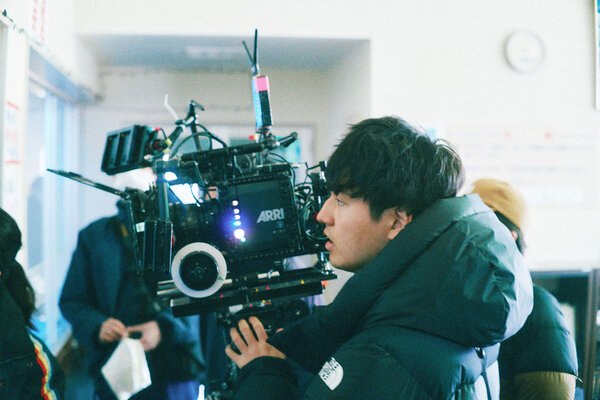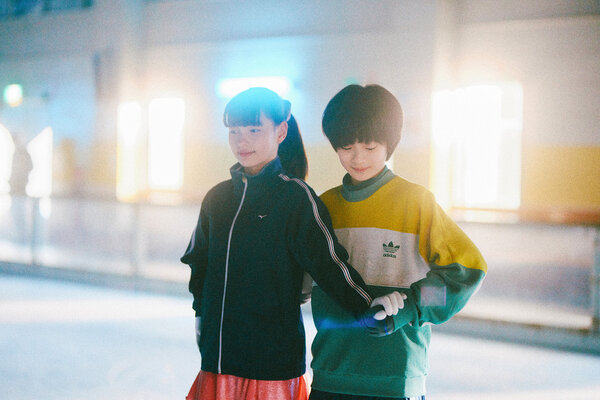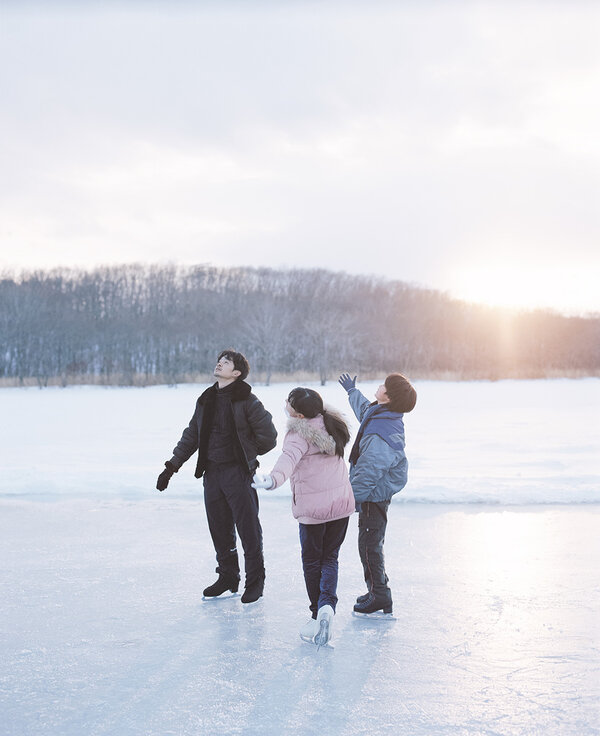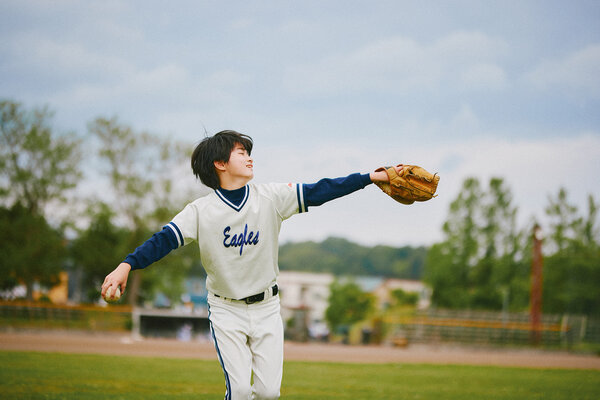Interview with Hiroshi Hokuyama, director and DoP of "My Sunshine"
"Hockey in Hokkaido" by François Reumont for the AFCOn the island of Hokkaido, winter is hockey season for the boys. Takuya, however, is more captivated by Sakura, who has just arrived from Tokyo and is practising figure skating routines. He clumsily tries to imitate her, so much so that Sakura’s coach, touched by his efforts, decides to train them as a duo for an upcoming competition... As winter progresses, harmony develops between them despite their differences. But inevitably, the first snows melt and spring arrives.
Which of the three characters do you feel closest to?
Hiroshi Okuyama : The young boy, Takuya, most resembles me. I myself did some ice skating in my childhood, and I have kept a few memories of it. However, the film is not autobiographical; it’s mostly a situation I drew inspiration from, especially the icy setting in which the film was conceived. However, the story and the dramatic stakes are entirely original.
The film is somewhat timeless…it’s hard to know when it takes place.
HO : Generally speaking, I don’t like to define or delimit time too precisely in my films. Leaving some doubts, in my opinion, allows for a more universal perspective, where each viewer can better identify with the story. If you place yourself too precisely in one era, past or present, I find that it limits the film. This principle applies just as much to the choice of location, or even to the dialogue, - which I don’t want to make too explanatory -, leaving as much room as possible for the viewer’s interpretation.
So, the location is very important to you?
HO : For me, the filming location determines a film’s identity. For My Sunshine, I spent a lot of time finding the right locations. Almost as much time as with my actors!
I would say that I’m a filmmaker who prefers landscapes, because filming faces alone isn’t necessarily enough to evoke emotion, whereas filming characters within a contextual setting is what resonates with me the most. It’s in a place, a location, that you find the best camera angles, the best composition to frame the image, almost like a postcard, so you can tell your story.

Are you more of a director who decided to handle the imagery yourself or a cinematographer who transitioned into directing?
HO : I’m primarily a cinematographer who had aspirations to direct rather than the other way around. Of course - as I imagine many people do - my initial desire to make films was there without really asking myself that question. But I must admit that it’s always through my relationship with the camera, with lenses, that I envision the film. This special relationship with the image puts me in this category. I think it’s a good thing to try something other than your own specialty... especially nowadays, when it’s objectively much easier to try and create your own images than it was in the days of film cameras. So, I think that directors should explore being their own cinematographers more often, just as cinematographers have much to gain from trying out directing…Not necessarily for their entire career, but yes, why not experiment with something else from time to time, and change one’s perspective on how things are done...

The ice rink is a recurring location in the film, and becomes a bit like your studio... how did you approach filming in this setting?
HO : For the ice rink, I had a very clear idea of what I wanted. As it happens, there are only about a hundred of these installations in Japan. Most importantly, I absolutely wanted it to be a place with windows, or at least with openings to the outside through which we could shine our lights. So, the choices were extremely limited, and we quickly settled on this one, which met these conditions, and which also had this retro feel we talked about, giving the film that famous timeless quality. I didn’t want a location that was too modern. It would have completely changed the tone of the film... For the camera, I had won an award at the Pusan Film Festival with a previous film, and Arri had offered me a grant. So, I filmed with Alexa, using Ultra Primes lenses, which were quite diffused with Black Pro Mist to raise the shadows a bit and create those flares in the light entering through the windows.
The frame are initially very static, but they gradually gain movement…
HO : The film was built around this movement which follows the story. At the beginning, it’s very static, the snow arrives, and Takuya and Sakura meet. As the relationship develops, the camera starts to move, culminating in the frozen lake scene. The idea was to accompany this relationship with the camera, then return to very still shots towards the end when the snow begins to melt and the epilogue arrives.

Let’s talk about this lake sequence, which marks the climax of the relationship between the three characters...
HO : For the lake scene, I wanted to give the audience the impression that a virtual fourth person was joining this joyful outing. Not God, but maybe an imaginary friend?
So, I put on the skates myself, and joined the actors as this fourth presence.
The camera moved freely along with me, and we had a lot of fun. This sequence was shot over two days, with overcast weather on the first day, which we kept for the beginning of the sequence. Luckily, the sun came out on the second day, and that’s when we embarked on this kind of joyful happening with great enthusiasm until nightfall.

A word on the look: the film has very pastel colours, and a very limited range of tones.
There’s a very Kodachrome, 60s feel to it?
HO : The location scouting, during which I studied the colours and tones of each set, helped me prepare the rendering. For example, the city scene, with that shot of Arakawa on the balcony, and then later in the street, with the car and the train. I didn’t have the Arri camera with me yet, so I filmed with my own Blackmagic and then found the look I wanted, using Resolve, to use it as a reference. I would also say that the filmmaker Roy Anderson was an inspiration. I really like his films, and by extension Edward Hopper’s paintings, whom Roy Anderson himself admits to being a great admirer of.
(Interview by François Reumont for the AFC)
 En
En
 Fr
Fr








